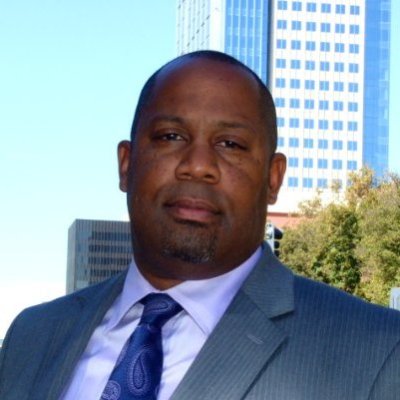Author: Robert A. Jenkins III, Financial Advisor
As the newly minted California State Mandated Retirement Plan shifts the paradigm for small-to-medium-sized business owners, entrepreneurs may ponder the panacea of voluntary retirement options.
Although most business owners wouldn’t argue the benefits of sponsoring a plan for their firm, there may be some internal resistance, specifically because it can complicate payroll processes by requiring discrimination testing for highly compensated employees (HCEs). An HCE is distinguished from the rest of the workforce by two important factors: an annual compensation threshold of $125,000 in 2019, or ownership of more than 5 percent of the interest in the business at any time during the year or the preceding year, regardless of compensation.
However, there exists a provision that generally makes a 401(k) plan simpler to maintain: a safe harbor provision. The special contribution rules of this type of plan create a de facto exemption from all mandatory discrimination testing requirements.
Understanding the Safe Harbor Contribution Rule
The safe harbor rule states that an employer must make a contribution to the retirement account of eligible employees in one of three methods:
Non-Elective Safe Harbor: All eligible employees get an annual employer contribution equal to three percent of their salary. The contribution is considered 100 percent vested immediately and it is received regardless of the employee’s contribution amount.
Basic Safe Harbor Match: The employer matches 100 percent of the first three percent of the employee’s contribution, and 50 percent of the next two percent of the employee’s contribution. This requires employees to contribute to their own 401(k) account to receive the employer matching contribution.
Enhanced Safe Harbor Match: The employer matches 100 percent of entire employee’s contribution up to four percent. Again, this requires the employee to defer money to their 401(k) account to receive the employer matching contribution.
Avoiding ADP/ACP Nondiscrimination Tests
During each plan year, the plan sponsor/business owner must ensure that contributions to the plan made by rank-and-file employees or non-highly compensated employees (NHCE) are proportional to contributions made by higher salaried owners and managers. This process is usually done through discharge to a third-party administrator (TPA). These discrimination tests are the Actual Deferral Percentage (ADP) and the Actual Contribution Percentage (ACP) tests.
The ADP test is met if ADP for the eligible HCEs doesn’t exceed:
The greater of 125 percent of the ADP for the group of NHCEs, or
The lesser of:
200 percent of the ADP for the group of NHCEs, or
the ADP for the NHCEs, plus two percent
The ACP test is met if the ACP for the eligible HCEs doesn't exceed:
The greater of 125 percent of the ACP for the group of NHCEs, or
The lesser of:
200 percent of the ACP for the group of NHCEs, or
the ACP for the NHCEs plus two percent
Pros of the safe harbor
Bypass complex nondiscrimination testing
Allow all employees to contribute maximum allowable amounts to their 401(k) accounts
Reduce resources necessary to monitor contributions from NHCEs
Not restrict employee contributions from HCEs and company owners
Still provide tremendous incentive for employees to save for their future retirement
Limitations of the safe harbor
Under safe provision, you need to commit to the plan for at least one calendar year
There are specific annual deadlines and requirements (October 1st is deadline to launch a safe harbor of the current calendar year and December 31st is the deadline for all employees to receive notice of changes or adoption of a safe harbor)
There is a termination fee charged by most providers
The Bottom Line
The more employees you have and the higher their salaries are, the more expensive this type of plan becomes for your company. If you offer a non-elective safe harbor plan, it will be easy to calculate the total budget for the plan as a function of three percent of your payroll; the two other
safe harbor matches will be less predictable – but they are often less expensive overall due to their reliance on employee contributions.
Robert is an independent Financial Advisor serving clients in the states of California, Indiana and New York. An important aspect of his practice is the consultation of business owners in the selection, due diligence and maintenance of their ERISA and/or non-ERISA retirement vehicles. He is a graduate of California State University, Sacramento College of Business Administration with a concentration in Finance. Growing up as the son of a small business owner and an educator in Silicon Valley, he witnessed a very important lesson that still motivates his passion for working with clients and their families today. Even the smartest and the most talented people often struggle to maintain a suitable work-life balance. As a result, they often need a trusted partner in the most important aspects of their lives. By leveraging Robert’s expertise to navigate the increasingly diverse financial landscape, decision makers win back time. He, Jenine, Miles and Robyn are often found together enjoying the social and outdoor aspects of the greater Sacramento area where they reside.
Data contained here is obtained from what are considered reliable sources; however, its accuracy, completeness or reliability cannot be guaranteed as provisions are subject to change.
Securities and Investment advisory services offered through SagePoint Financial Inc., member FINRA/SIPC. Insurance services offered through Robert A. Jenkins III are independent of SagePoint Financial, Inc.

